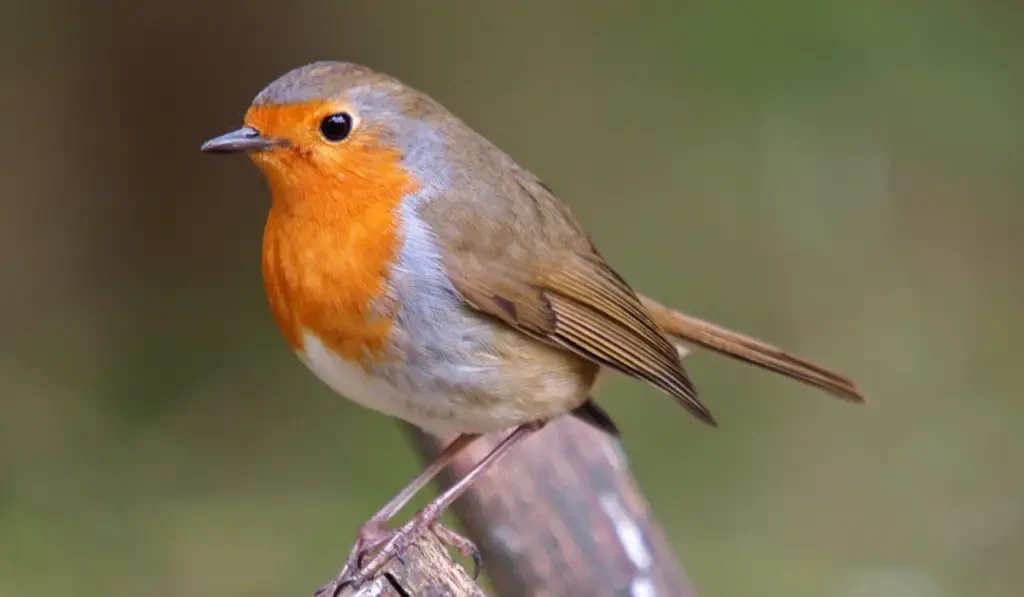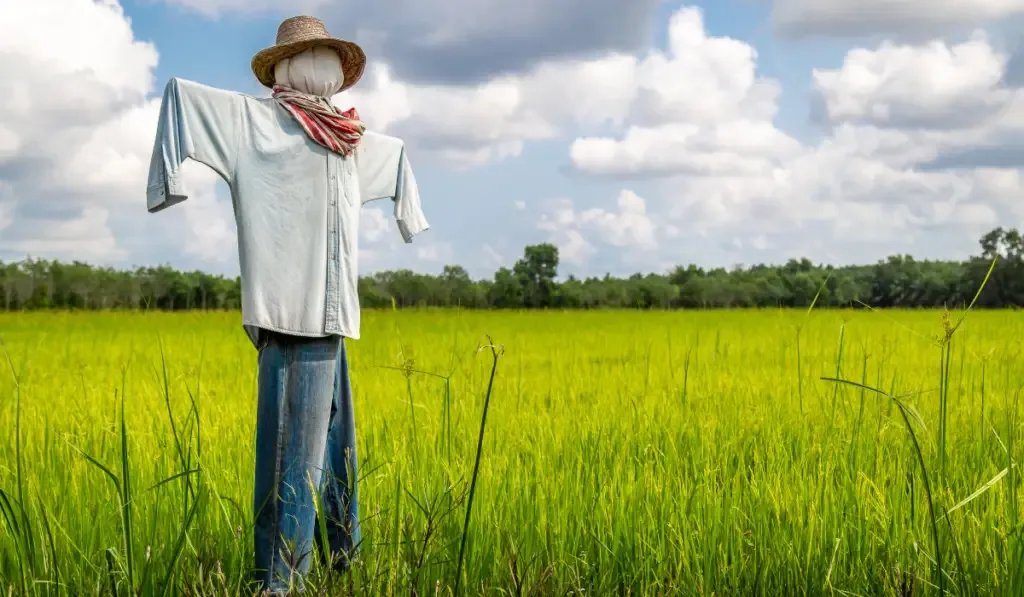Hawks are majestic birds that enjoy a reclusive lifestyle. Contrary to popular belief, Hawks don’t kill as many birds as you might think. In fact, studies found that Hawks catch and kill their prey only 10% of the time.
Hawks kill what they need and won’t hunt for sport. Interestingly, they aim for sick, weak, or old birds, essentially strengthening the flock.
Some bird-lovers encourage hawks in their backyards, while others would prefer these mysterious birds roost elsewhere.
Here are 11 birds hawks will eat as well as five tips to protect your backyard friends.
Table of Contents
11 Birds Hawks Will Eat
Hawks choose their habitat and hunting style based upon the food they eat. Their large talons help them scoop up their prey.
Depending on the species and where they come from, hawks will eat everything from birds to amphibians. Here are the most common birds they will eat.
1. Robins

Robins, members of the thrush species, are the early birds of America. They enjoy nesting in trees and waking you up with a beautiful song. Robins often live an urban life, but they also enjoy the wild mountain forests and Alaskan wilderness.
They are easy targets for hawks when they live in your backyard. Robins love to roam around the lawn pulling earthworms out at the crack of dawn. Hawks soar above waiting for their chance to strike.
2. Jay Birds
Surprisingly, Jay Birds are part of the crow family. They enjoy living in woodland areas with plenty of tree cover as they are quite shy birds.
Jay Birds prepare for winter by burying acorns in the autumn months. This is when hawks will try to catch these beautiful birds. Jays are also vulnerable when flying as they release a piercing call and have an eye-catching, white bottom.
3. Mourning Dove
The Mourning Dove is a part of the pigeon family and is common in North America. They have longer tails than pigeons and are slightly smaller in size. Their mortality rate is a whopping 80% in their first year of life.
Mourning Doves have violet and pink feathers along the sides of their neck that gleam in the light. Most doves enjoy feeding off the ground, so Hawks love to prey on them.
4. Tinamou

You can find about 47 different Tinamou species living across Central and South America. They are much like quails but are semi-flightless birds.
Tinamous are ground dwellers and love roaming around for grubs to munch. They are popular game birds among hunters.
Hawks also love hunting these birds. Tinamous make easier targets than other birds because they struggle to fly.
5. Northern Screamer
The Northern Screamer is larger than some of the other birds on this list. They are beautiful with long orange, red legs that extend from a body of black feathers.
They have white around the bottom and top of their necks and a patch of red surrounding their eyes. Northern Screamers commonly live in wet areas like marshes or ponds.
Hawks will swoop down and catch these magnificent birds while they are feeding in the water.
6. Crows
Crows are intelligent and adapt to almost any environment. Their harsh caws send chills running through your body as they invoke all the horror movie scenes you can imagine. About 40 different crow species exist around the world.
They prefer living in open areas like grassland or agricultural areas. Many farmers consider them pests. Hawks love eating crows and can even help keep them away from crops.
7. Ravens

Ravens are the geniuses of the bird world. They fascinate scientists who create elaborate problems for them to solve, which these mysterious birds do with ease.
Ravens love living near humans because they munch on our scraps.
Hawks find it easy to catch and eat these bluish, black-feathered birds because of the way they scavenge for food. Ravens are easy targets as they sift through garbage cans or eat roadkill.
Hawks will struggle to catch ravens when they are in flight. Ravens are expert fliers and often do somersaults just for fun.
8. Hens
Hawks love eating chicken almost as much as we do. They are easy targets because they forage on the ground for food and can’t fly well.
People who keep backyard chickens definitely want to keep hawks away from their garden. While hawks won’t eat your whole flock, you still want to protect all your chickens from harm.
9. Ducks
Another popular backyard pet that hawks will eat is the duck because it is an easy target. Ducks love swimming around and relaxing on the grass when they aren’t in the water. Fortunately, ducks can fly to safety in some cases.
Hawks will also catch ducks that live in parks or marshlands. You won’t lose your entire flock of ducks because hawks only eat as much as they need.
10. Sparrows

Sparrows are commonly found in areas with temperate weather. They have conical beaks and love eating seeds of any kind.
Hawks love eating any of the 35 species of sparrow found in North America. Sparrows are easy to catch if they are eating seeds off your lawn. The most common species is the house sparrow.
Hawks make a quick meal out of these cute, colorful birds.
11. Quail
Hawks love hunting quail. You will find more than 130 species of quail worldwide. They are similar to partridges in color but are much smaller.
Quails prefer living in open lands with bushy areas running along the borders, making them easy targets for hawks. Farmers detest these birds for catching and eating their quail.

5 Tips to Protect Your Backyard Friends
Some people want to attract hawks to their yards or farms to get rid of pest birds like crows. But most people want these predators to leave their backyard friends alone.
Here are five tips to help you protect the birds in your garden.
1. Use Bird Feeders Instead of Ground Feeding
Birds that eat on the ground are easy targets for hawks. Birds that eat on the ground have fewer escape options and are slower to react. Hawks can quietly swoop in without their prey even noticing.
Rather place birdseed and other snacks in a hanging feeder to protect your backyard friends. If you can, do the same with their water.
2. Provide Protection on Bird Feeders and Other Areas
When you set up your birdfeeder, be sure to find ones that have wire cages around the perches and feeding ports. This will add an extra layer of protection for your backyard friends.
Use fencing to create a shelter over the pasture where you keep your chickens and ducks. They can roam free without you worrying about a hawk carrying one of them away.
3. Create Natural Protection
If you have the space, try to create natural protection for your birds by planting many trees and bushes. It gives them many places to hide or escape if they find themselves in danger.
Whether it’s natural tree cover or something man-made, use a shelter and place any bathing spots there to provide further protection.
Making sure all bathing pools and feeders are within at least 10 feet of the shelter you create. This will give small birds ample opportunity to make it to safety.
4. Use a Scarecrow or Shiny Objects

Hawks don’t like certain visual deterrents like scarecrows or shiny objects. You can build a make-shift scarecrow to keep the hawks away from your chicken, or simply hang CDs from a string around your backyard.
Reflective tape also works well because the hawks don’t like the sound of it flapping amongst the leaves when the wind blows.
5. Remove All Feeders
Bird feeders and other food sources create a backyard buffet just for your hawk. The best way to keep hawks away for good is to remove all feeders. Unfortunately, it does mean your feathered friends may visit you less.
Alternatively, remove the feeders for a short while. Wait until the hawks realize your garden isn’t a free-for-all any longer, and then replace the feeder.
Bottom Line
Hawks are skilled predators that will eat many different birds depending on the species. They are reclusive birds that aren’t greedy. Hawks won’t eat anything that weighs more than they do as they usually catch their prey and eat it at a different location.
You can keep hawks out of your backyard by putting up a scarecrow, using protected birdfeeders, and in extreme cases, stop feeding your backyard birds altogether.
Hawks can help keep certain flocks healthy but are sometimes a pest. Use these methods to help you keep hawks away from your backyard friends.
Research
- https://nature-mentor.com/hawk-diet/
- https://onlyzoology.com/do-hawks-eat-birds-how-does-a-hawk-kill-a-bird/
- https://www.britannica.com/animal/dove-bird
- https://www.rspb.org.uk/birds-and-wildlife/wildlife-guides/bird-a-z/jay/
- https://www.britannica.com/animal/tinamou
- https://www.livescience.com/52716-crows-ravens.html
- https://birdsoftheworld.org/bow/species/norscr1/cur/introduction
- https://www.allaboutbirds.org/guide/Common_Raven/id
- https://starmilling.com/poultry-chicken-breeds/
- https://www.britannica.com/animal/duck
- https://www.britannica.com/animal/sparrow
- https://www.britannica.com/animal/quail
- https://worldbirds.com/how-to-keep-hawks-away/
- https://pestcontrolhacks.com/how-to-keep-hawks-away-from-chickens/
- https://morebirds.com/blogs/news/4-ways-to-protect-your-backyard-birds-from-birds-of-prey
- https://www.nwf.org/Magazines/National-Wildlife/2016/OctNov/Animals/Hawks
- https://nature-mentor.com/hawk-diet/
- https://onlyzoology.com/do-hawks-eat-birds-how-does-a-hawk-kill-a-bird/

